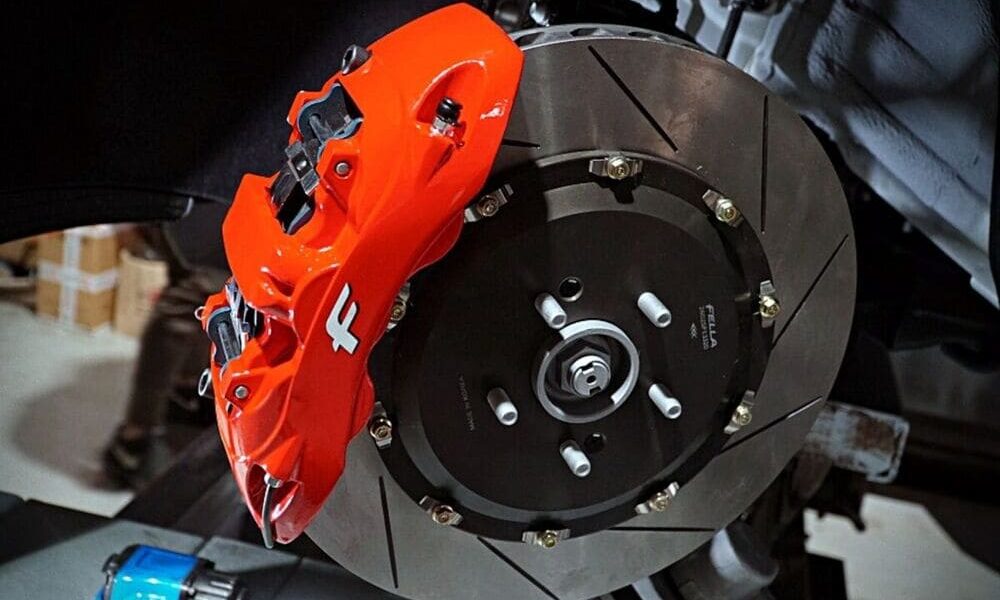
WHAT CAUSES A ROTOR TO CRACK?
Brake Rotors do not crack from hitting a pothole or curb; they break due to the stress of heat and cycling from hot to cold. Also, mechanical stresses from stopping the vehicle can play a part. Every time the brakes are applied, the rotor heats and expands. After the calipers release, the rotor cools and contracts. This can create fatigue in a rotor that can cause cracking and structural failures. A replacement rotor that has been engineered and manufactured has built-in features to manage the heat cycles’ stress. It first starts with the design of the fins and hat structure. The most critical area of the rotor is where the rotor’s plates connect to the hat. Some rotors will have special heat dams to control the different expansion rates of the rotor and heat. Next, how the rotor is manufactured can prevent cracks. The casting process’s heat and energy and how the rotor is cooled before it is machined can cause or reduce stress in the rotor.
ARE THERE ANY SAFETY CERTIFICATIONS OR REQUIREMENTS FOR REPLACEMENT ROTORS?
No. A replacement brake rotor or pad does not have to be tested to any specification by the government in the U.S. For new vehicles, the DOT tests the brakes as an assembled vehicle under specific conditions. The car must stop below a specified distance under different loads, scenarios, and pedal pressures. Brake rotor manufacturers must engineer their rotors to operate simultaneously or better as the OEM rotor. Deviating from the OE design to save money can result in a compromised brake system. The Society of Automotive Engineers (SAE) has developed a series of tests on a brake dynamometer to test replacement brake rotors for cracking resistance. The SAE test subjects a rotor to 150 heat cycles. A heat cycle is when a rotor is cold and brought to a high temperature. During a heat cycle, a rotor will expand and contract. This can create fatigue in a rotor that can cause cracking and structural failure. The tests’ objective is to thermally and mechanically stress the rotor so any metallurgy or structure deficiencies are exposed.
CAN CORROSION COMPROMISE THE STRUCTURE OR THE ROTOR?
Yes. Excessive corrosion in certain areas of the brake rotor can contribute to structural failures. Also, excessive wearing of the brake rotor working surface beyond the discard specification raises the probability of rotor failure.
DO SPECIAL FINISHES ON THE ROTOR HELP ITS PERFORMANCE?
No. The dull silver finish on most premium brake rotors is known as a Goemet coating. Once the brake pads make contact with the rotor, the layer will be removed. These types of rotors are ready to install straight out of the box. The brake rotor needs to be free from grease contamination. The coating is designed not to contaminate the brake pad material and help in bedding the new pads. Geomet coatings are applied to all the surfaces of the rotor, including the fins and hat.
Courtesy of hollenshades










